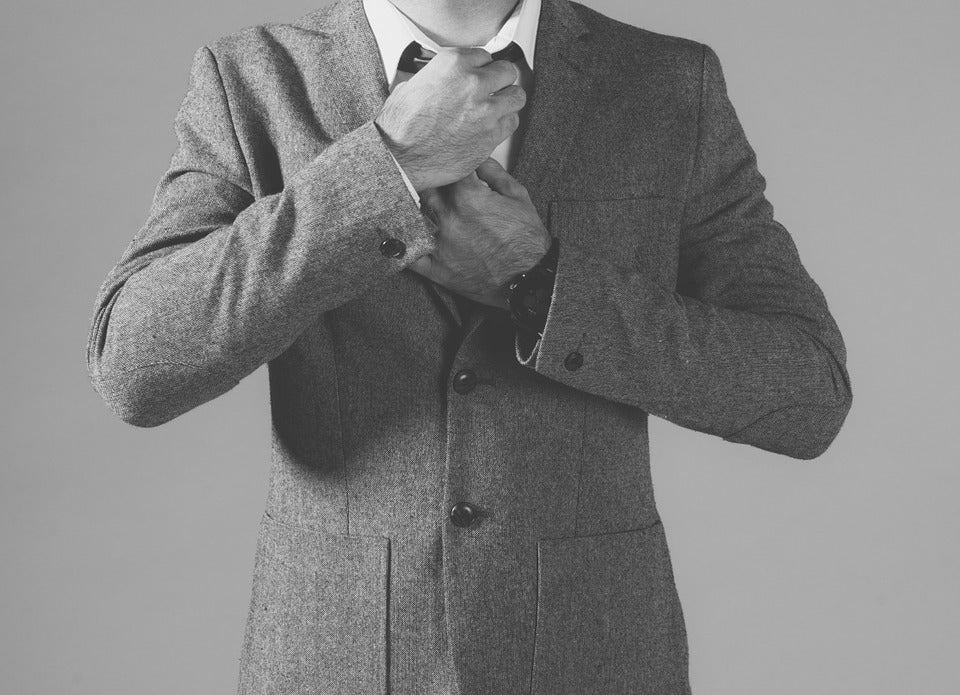A suit is an important component of men's formal wear. Whether you are attending a wedding, job interview, business meeting, graduation or any other formal occasion, you need to wear a suit. Typically consisting of trousers with a matching jacket and necktie, it's the de-facto standard for men's formal wear. However, suits -- like all garments -- have changed over the years. The suits you see today differ from those made in the past. Granted, they still share some similarities, but there are stark differences between suits made in the past and those made to day.
The 19th Century
While historians believe that suits have been around in the United Kingdom since the 17th century, it wasn't until the 19th century when the modern lounge suit appeared. During this era, George Bryan "Beau" Brummell, friend of King George IV, pioneered the suit style. This led to a trend where European men would wear tailored, high-quality suits with stylish neckties. These weren't the same suits you see in stored today, however. These early era suits were tight fitting and generally featured a dark frock coat with light, non-matching trousers.
The 20th Century
Fast forward to the 20th century, the suit began to change. No longer were men wearing frock coats. Instead, they were wearing morning coats with their suits. As you may already know, a morning coat is a formal suit coat that's characterized by a cutaway in the back. When viewing a morning coat from the back, you'll see the left and ride sides of the fabric are split from each other. It's a subtle feature that offers a unique style. And with this stylish new design, many men in the United Kingdom and elsewhere began to wear a morning coat with their suits instead of a traditional frock coat.
The Short-Coated Lounge Suit
Suits continued to evolve and change following the end of the first World War. One notable change was a growing popularity and demand for short suits. Also known as the short-coated lounge suit, it became increasingly popular around in the 1920s. Rather than wearing traditional long coats, men began wearing short coats. According to Wikipedia, short-coated lounge suits such as this were worn for nearly all formal occasions during the day. There were still a few men who preferred the old, traditional look of a frock coat, though this style was largely replaced by the short-coated lounge suit.
For evening and nighttime occasions, men began wearing a short dinner jacket. This is in stark contrast to the long coats, which often featured "tails." Another key change in suit styles involves the trousers. In the 1920s, tight-fitting trousers were replaced with wide, straight-legged trousers. Not only was this more comfortable, but it arguably looked better as well. Traditional men's trousers of this era usually measured around 23 inches.

The Modernization of Men's Suits
It wasn't until the 1940s and 1950s when the style of men's suits began to modernize. The style gradually shifted to the kind of suits we see sold and worn today. Lapels begun to shrunk; men began wearing single-breasted jackets; and the jackets were designed straight to conceal the waistline.
Of course, one of the reasons for these changes is a lack of resources. This was a critical time, as many countries were engaged in World War II. Rather than using fabrics and other resources to make suits, those resources were being used to produce military uniforms and other items. This resulted in cloth rationing while subsequently contributing to the modernization of men's suits.
One-, Two- and Three-Button Suits
Suit jackets were originally made with in a variety of button configurations, with most jackets featuring between one and three buttons. This style gradually faded in favor of one-button suits during the modernization era. In the 1990s, however, manufacturers began to make suit jackets in multiple button configurations once again.
When textiles and resources were being rationed, manufacturers opted for one-button suit jackets. In the 1990s, however, there wasn't a need to ration resources. Therefore, manufacturers made suit jackets in one-, two- and three-button configurations.
Suit Fabrics Today
It's also worth nothing that the fabrics used to make men's suits has changed over the years. Originally, nearly all men's suits were made of cotton, linen or similar textiles. While suits are still manufactured and sold in these fabrics, there are now more options from which to choose. So, what kind of fabrics are used to make men's suits today? Among others, some popular suit textiles include tweed, linen, cotton, wool, corduroy and velvet.
If you're interested in buying a new suit, it's important to choose the right fabric. Lighter fabrics like linen and cotton are generally recommended for the warmer months, whereas thicker fabrics like wool and corduroy are recommended for the cooler months. Think about when you'll be wearing the suit and choose an appropriate fabric for the weather.
Suit Colors Today
In addition to the fabrics, suit colors have also changed over the years. As previously stated, men's suits originally featured a darker jacket with lighter trousers. Today, men's suits usually feature the same color for the jacket and trousers. The most common color in which men's suits are made is black. A black suit offers a high level of formality while enhancing the wearer's appearance. However, men's suits are available in countless other colors, including brown, gray, taupe, white, red, blue and more. You'll also find some men's suits feature two or more colors. Two-tone plaid, for instance, is a popular style in which men's suits are made.
As you can see, men's suits have gone through a number of changes since they were originally invented several centuries ago. Some of these changes are minor, whereas others are more significant. Regardless, it's important to familiarize yourself with modern suit styles, as this will allow you to create a more cohesive, complete appearance.




